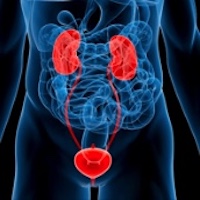 Smart Citations
Smart CitationsSee how this article has been cited at scite.ai
scite shows how a scientific paper has been cited by providing the context of the citation, a classification describing whether it supports, mentions, or contrasts the cited claim, and a label indicating in which section the citation was made.
L-carnitine as primary or adjuvant treatment in infertile patients with varicocele. A systematic review
Background: Varicocele has been found to impair the function of the epididymis resulting in subfertility whereas the varicocelectomy can resolve the phenomenon. L-carnitine is regarded as a biomarker for the function of the epididymis and has been found in reduced concentrations in infertile patients of various causes, including infertile men with varicocele. It seems that Lcarnitine and varicocele share clinical significance and the area of research looks promising.
Objective: To identify the role of L-carnitine in the treatment of varicocele.
Materials and methods: A systematic search was performed in Pubmed/Medline with the terms (L-carnitine) and (varicocele) and (L-carnitine) and (varicocelectomy). Inclusion criteria were studies reported outcomes of L-carnitine administration alone or in duet, as primary or adjuvant treatment to varicocele. Exclusion criteria were non-English language and animal studies. Studies using L-carnitine as part of a panel of therapeutic agents were avoided.
Results: Only four suitable studies were identified for discussion. In one randomized study, the combination of L-carnitine and cinnoxicam improved semen parameters in patients with non-high-grade varicocele compared to L-carnitine alone and had a favourable effect on pregnancy rates but the effect of grade is unknown. In another study, as an adjuvant treatment to varicocelectomy, L-carnitine showed no clear benefit. Finally, in comparison to surgery, the results are inconclusive; two studies showed some benefit might be expected in low-grade or subclinical varicocele, but surgery appears superior.
Conclusions: The evidence regarding the role of L-carnitine as a primary or adjuvant treatment of varicocele is sparse. The pathophysiological significance of L-carnitine implicates a potential role of the molecule in the management of varicocele, but the evidence so far is controversial for any recommendations. L-carnitine might be taken into consideration in selected cases; however, further search is needed in order the optimal role of L-carnitine in infertile patients with varicocele to be clarified.
Downloads
How to Cite
PAGEPress has chosen to apply the Creative Commons Attribution NonCommercial 4.0 International License (CC BY-NC 4.0) to all manuscripts to be published.

 https://doi.org/10.4081/aiua.2020.3.263
https://doi.org/10.4081/aiua.2020.3.263





